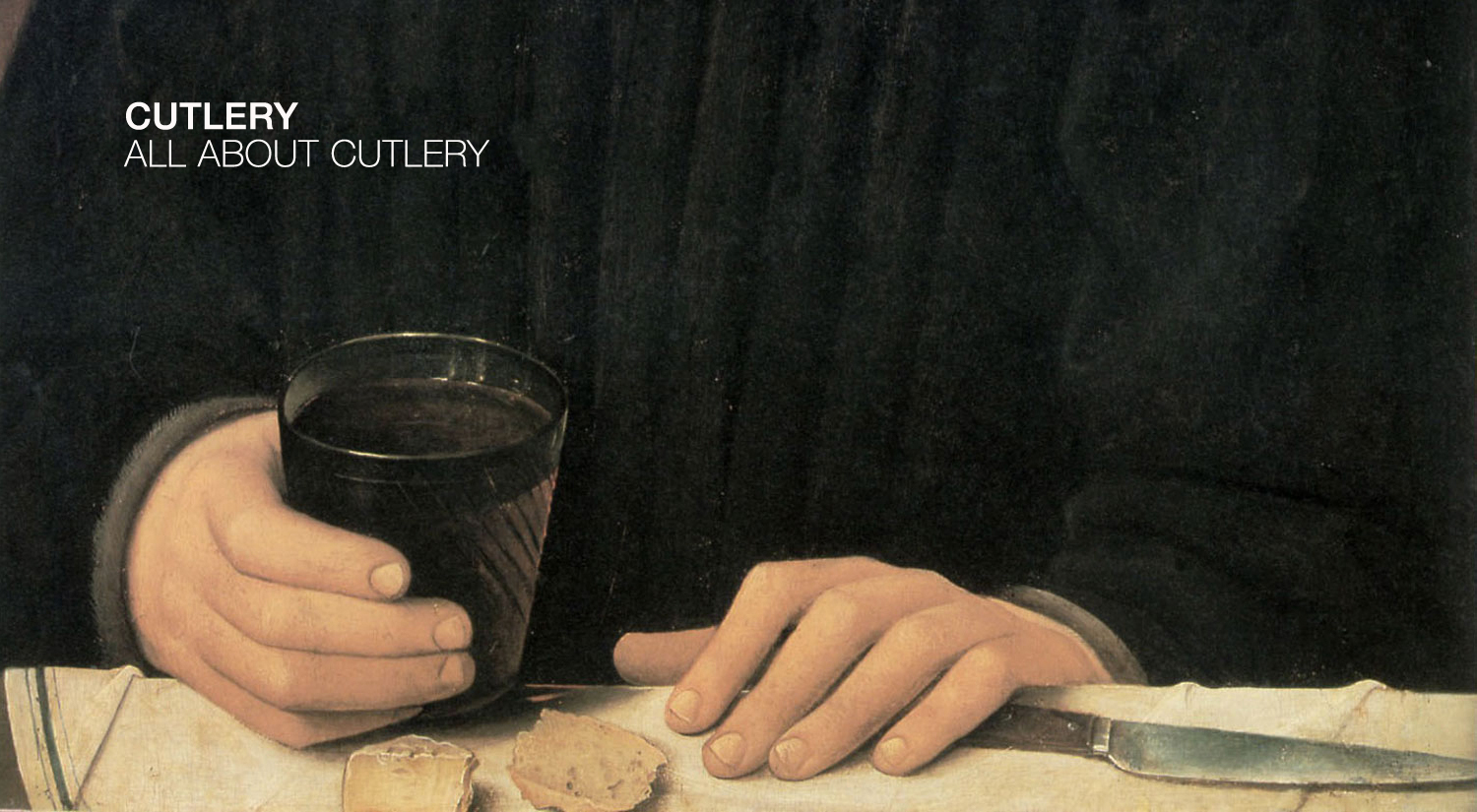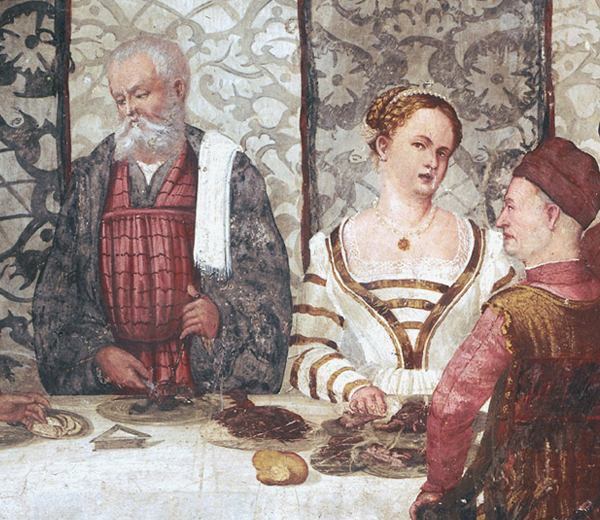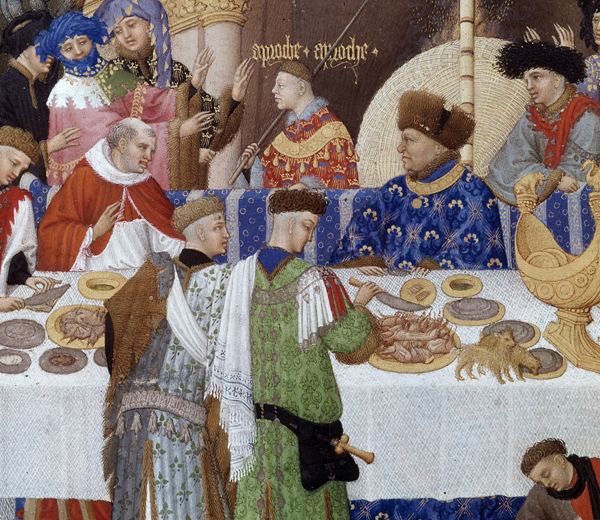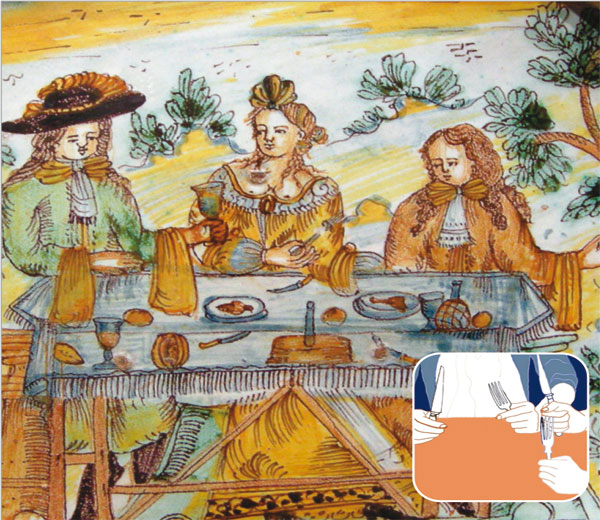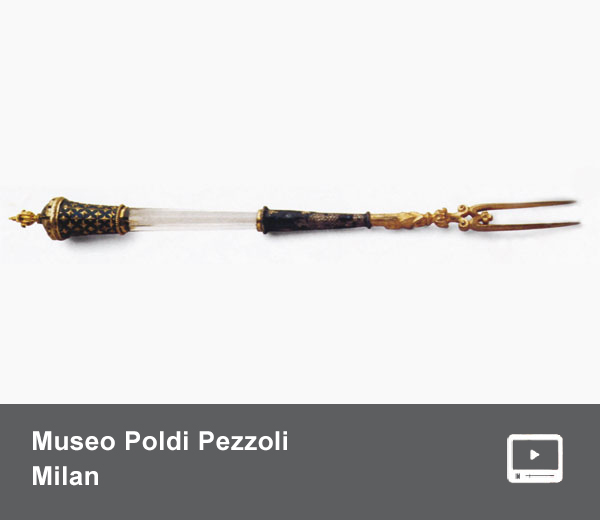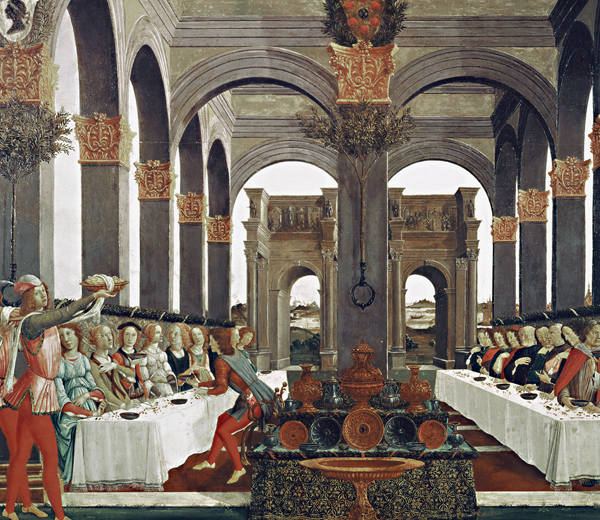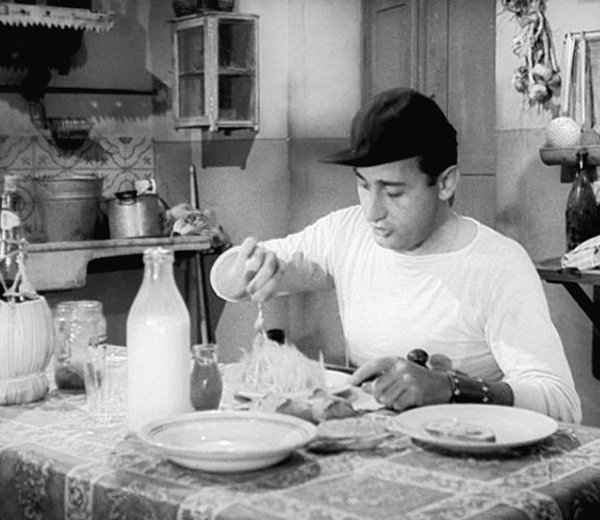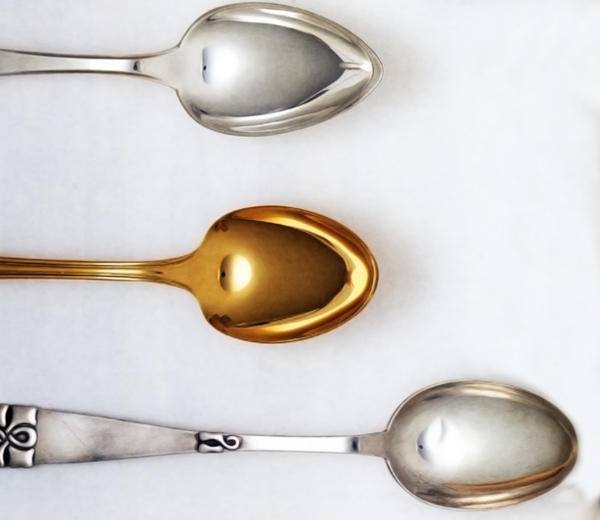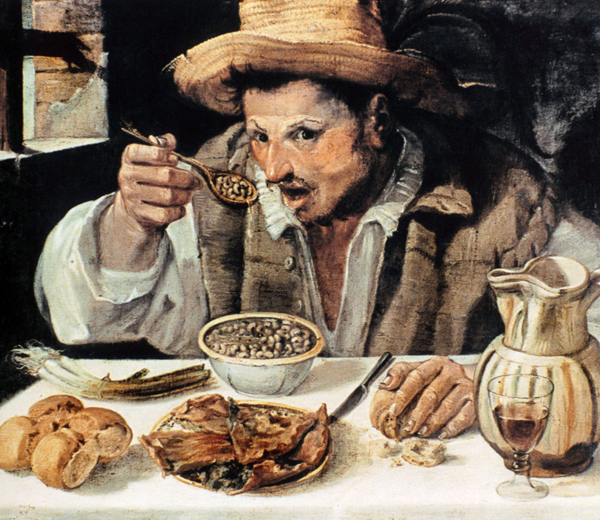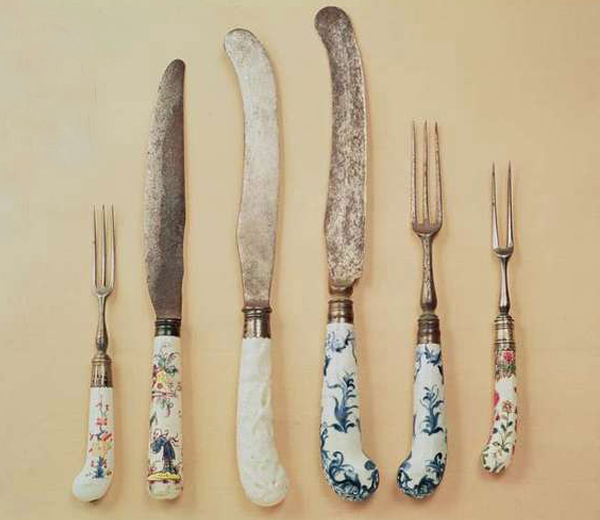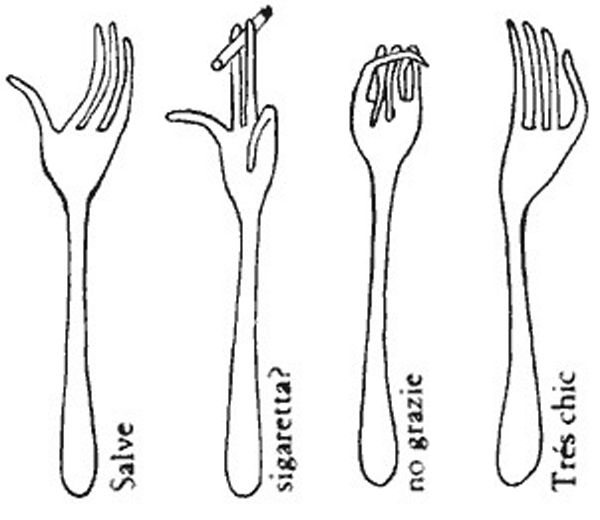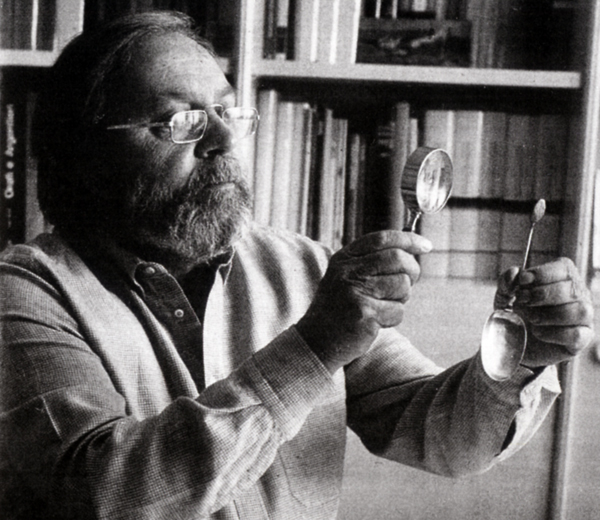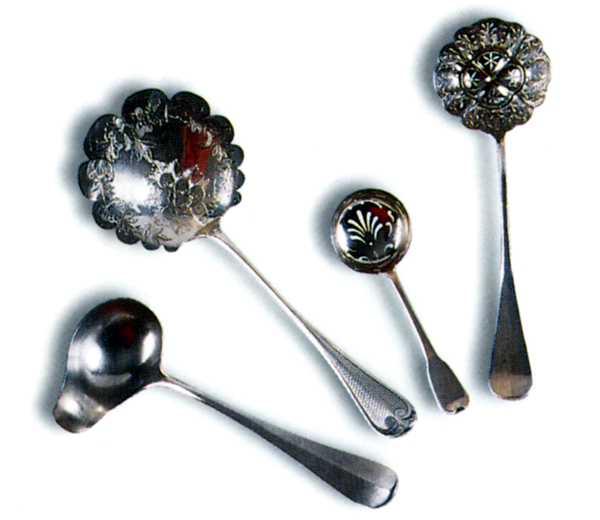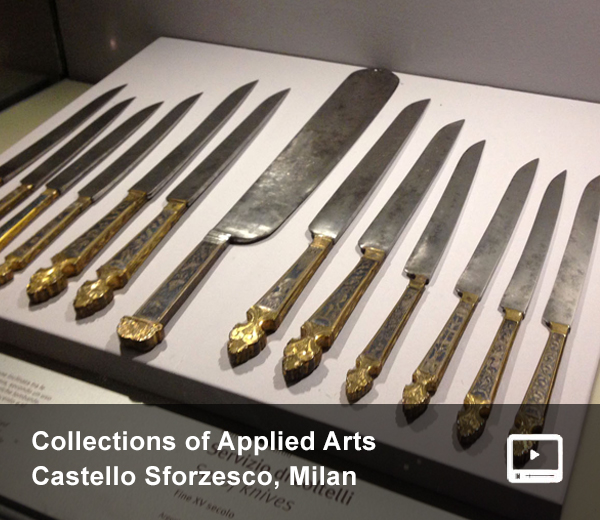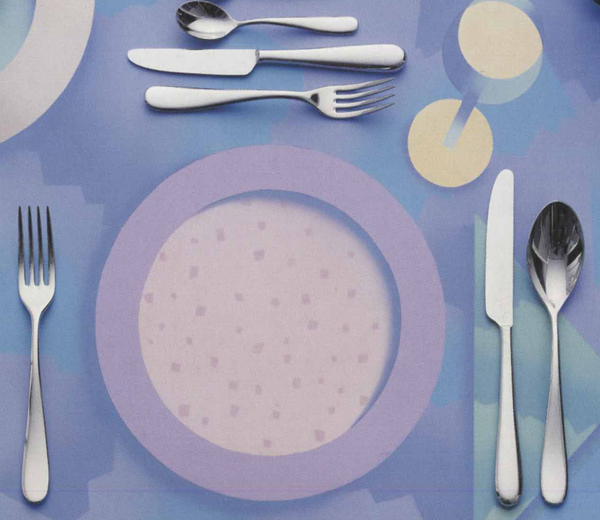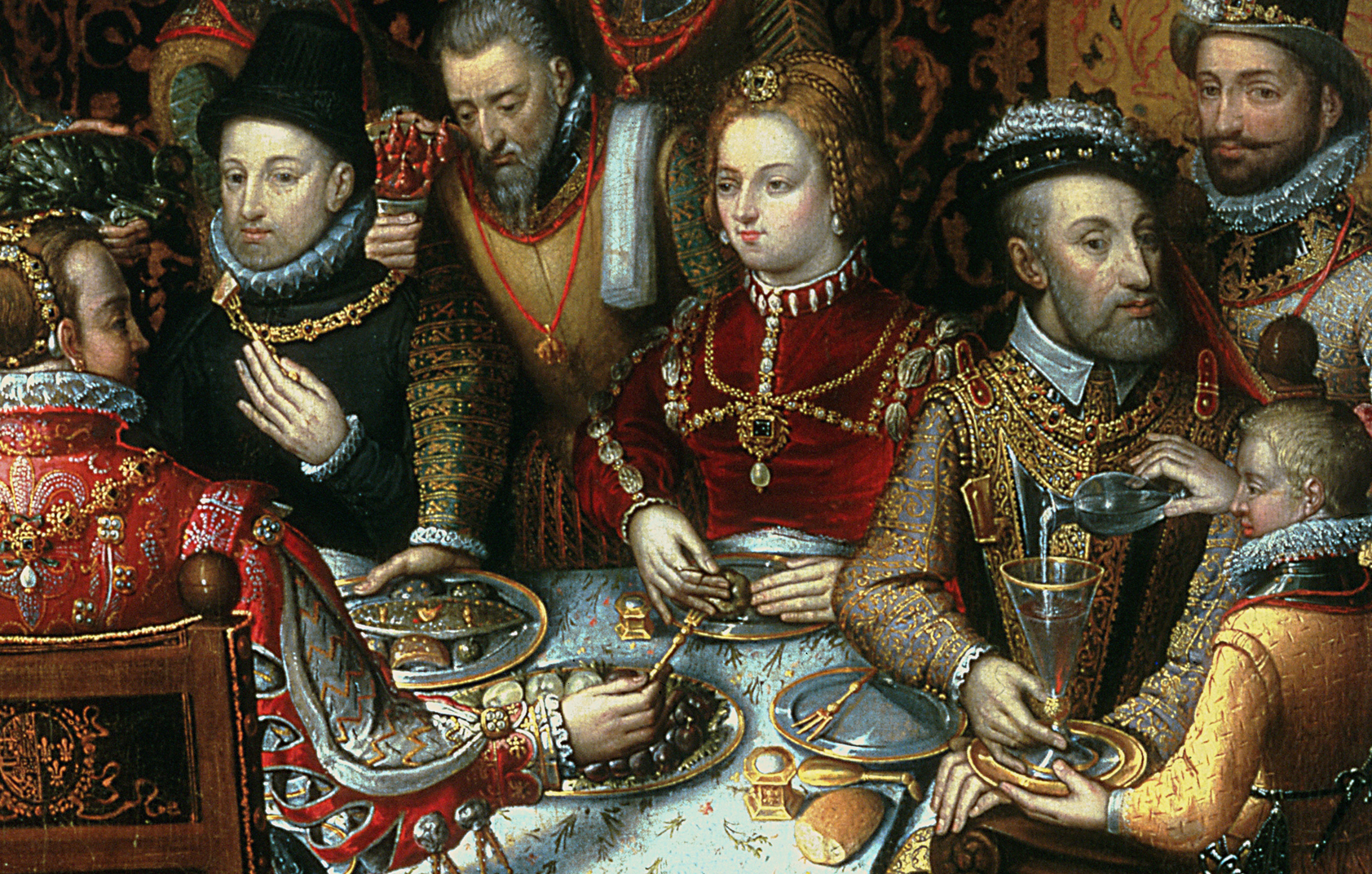
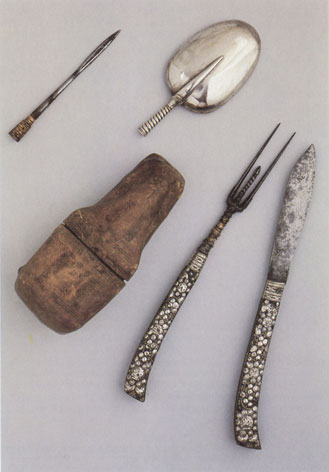
German factory, Travel cutlery, 17th century. J. Hollander Collection
Paolo Veronese (Paolo Caliari, known as), The Feast in the House of Levi, 1573, detail. Venice, Gallerie dell’Accademia
Top: Alonso Sánchez Coello, The Banquet of the Monarchs, c. 1579, detail. Poznań, Muzeum Narodowe
Bottom: Portuguese artist, Man with a Glass of Wine, mid-15th century, detail. Paris, Musée du Louvre
CUTLERY. SOPHISTICATED TOOLS
In 11th-century Venice, Teodora, a Byzantine princess who married Doge Domenico Selvo, used a fork in public during a banquet. Made from precious materials such as gold, and with two prongs, the fork was nothing new at rich Byzantine feasts, but it was new to Italy and the rest of Europe, where people ate with their hands. Books of etiquette in the 13th-century recommended using just three fingers to pick up food: all five fingers were considered the “instrument” of villains.
While the fork and carving fork were sometimes used when processing food, for example when gripping and holding meat in place during carving, the spoon was a more commonplace and essential piece of cutlery, even during banquets, where it was an important feature at the lord’s table for all liquid or semi-liquid dishes. The knife, which was really only used for slicing, was found on the serving dishes but was not used as an individual piece of cutlery.
For many years, even in modern times, only the great lords could supply the necessary cutlery for their guests, and it was much more usual for guests to take what they needed with them. Cutlery cases, which were often decorated and ingeniously constructed, housed a spoon, fork and knife.

